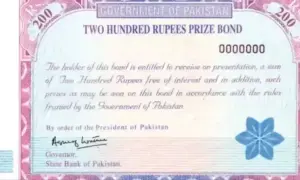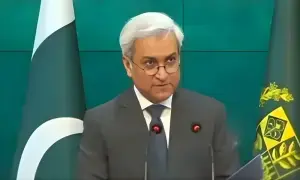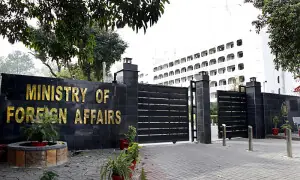PAF provides evidence of shooting down Indian Rafales
The Pakistan Air Force has provided evidence of shooting down five Indian aircraft on the night between May 6 and 7, including Rafales, during one of the biggest dogfights in recent history, lasting one hour and involving 72 fighter jets from India and 42 from Pakistan, according to PAF Air Vice Marshal (AVM) Aurangzeb Ahmed.
The evidence included electronic signatures of the aircraft, a recording of Indian Rafale formation whose commander is unable to hear from the pilot of a lost aircraft, as well images of the debris and crash sites.
The evidence comes as a major setback for the Indian Air Force that took pride in the 4.5 generation French-made Rafale fighter jets. Despite initial claims that all Indian aircraft and pilots returned safely, Indian officials now remain mum on the loss of their jets with
On Friday, DG ISPR, with all services’ representatives, held a press conference to brief international media on Indian aggression, Pahalgam attack and Indian media’s propaganda against Pakistan.
While briefing the international media, Air Vice Marshal (AVM) Aurangzeb Ahmed provided evidence in support of Pakistan downing Indian Rafale jets. Air Vice Marshal also shared the audio clip of the Indian pilot.
Pakistan Air Force revealed that the Indian Air Force launched an aggressive aerial manoeuvre by sending 60 warplanes from four different directions, including 16 Rafale fighter jets. The disclosure was made during a high-level press briefing attended by senior officials from Pakistan’s armed forces.
According to the PAF, the initial wave of Indian aircraft was followed by additional fighter jets, bringing the total number of intruding aircraft to 72. In response, Pakistan deployed 42 of its own fighter jets to defend its airspace.
Aurangzeb Ahmed said the first priority of the Pakistan Air Force was to ensure civilian safety. “PAF immediately rerouted civilian airlines to avoid any risk,” he stated.
Highlighting Pakistan’s real-time tactical capabilities, he said, “We altered our strategy mid-air and focused our targeting on the Rafale jets.” The PAF officials emphasised that despite being outnumbered, their calculated and disciplined response neutralised any strategic advantage sought by the Indian Air Force.
Continuing the briefing, Pakistan Air Force officials described the Indian aerial incursion as an unprecedented challenge for the country’s air defence. “It was a significant challenge for us,” the PAF said. “Something of this scale had never happened before.”
Sharing operational details of the confrontation, PAF officials confirmed that a Mig-29 aircraft of the Indian Air Force was successfully targeted and shot down just eight kilometres from the Line of Control (LoC). The incident highlighted the effectiveness of Pakistan’s aerial response despite India’s numerical advantage.
AVM Aurangzeb said one Indian jet was shot down by Pakistan’s air defence system while four others were taken down by aircraft.
The PAF said that in Kashmir an Indian MiG-19 was downed 8 Nautical Miles (NM) from LOC, a SU-30 was downed 25 NM from LOC, a Rafale was downed 53 NM from LOC. Another Rafale was taken down 7 from LOC in Jammu and a third Rafale was shot down 23 NM from International Border in the Indian state of Punjab. During the battle, an Indian UAV was also shot down 19 NM from LOC.
The aircraft, part of the Indian fleet involved in ongoing cross-border operations, was named after the now-extinct fictional monster Godzilla — a code reportedly used to project dominance.
“Just like Godzilla no longer exists, we have ensured the same fate for this aircraft,” a Pakistani official remarked, asserting the air force’s resolve and aerial superiority amid the current conflict.

Air Vice Marshal (AVM) Aurangzeb Ahmed stressed the urgency and risks involved in such modern conflicts. “In modern warfare, if you do not act first, you get killed,” he said, underscoring the need for swift and decisive responses in evolving threat environments.
Air Vice Marshal Aurangzeb Ahmed highlighted the speed and preparedness of the Pakistan Air Force in responding to the Indian air aggression. “We knew we couldn’t afford assumptions in modern warfare,” he said. “We are grateful to Allah for Pakistan’s successful defence.”
He added that the Pakistan Air Force was operationally active within just two minutes of detecting the Indian aerial incursion. The rapid response underscored the force’s high alertness and combat readiness amid a complex and high-stakes situation.
For the latest news, follow us on Twitter @Aaj_Urdu. We are also on Facebook, Instagram and YouTube.
















Comments are closed on this story.